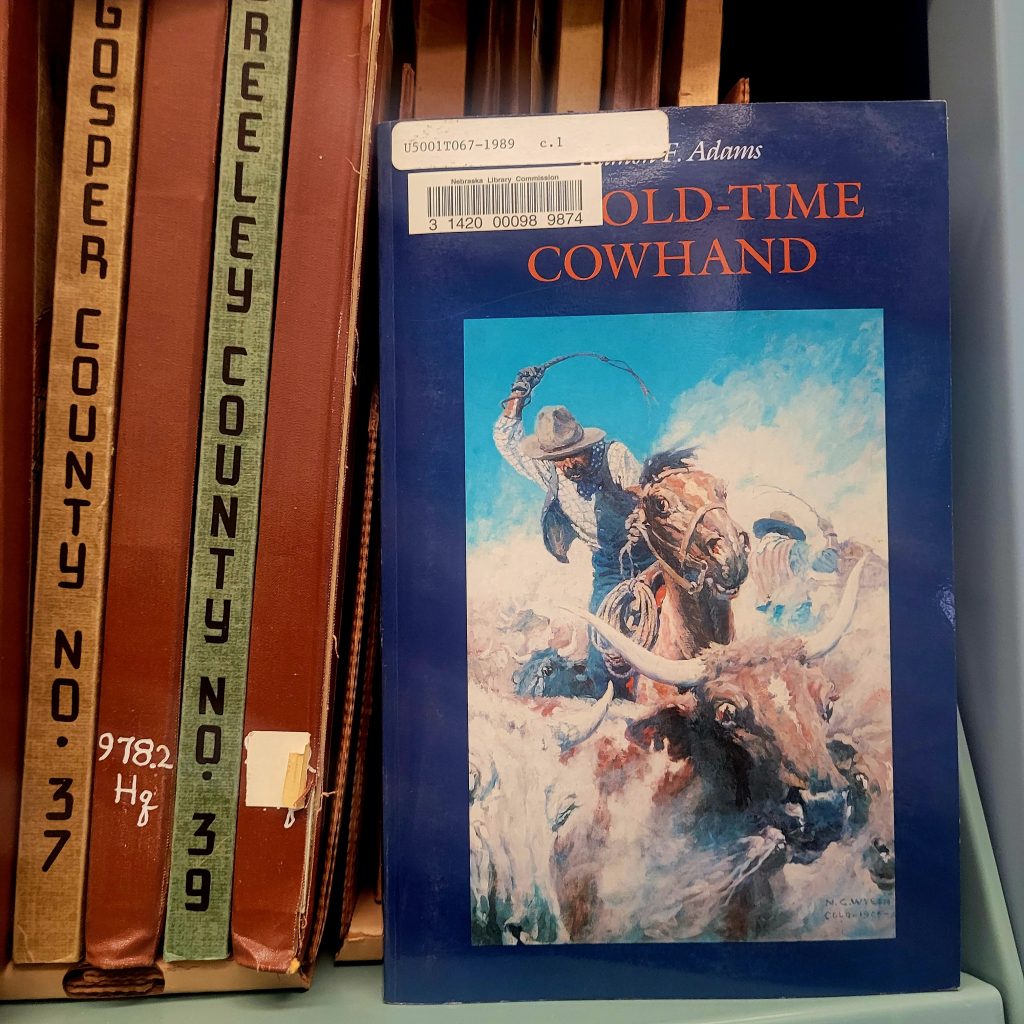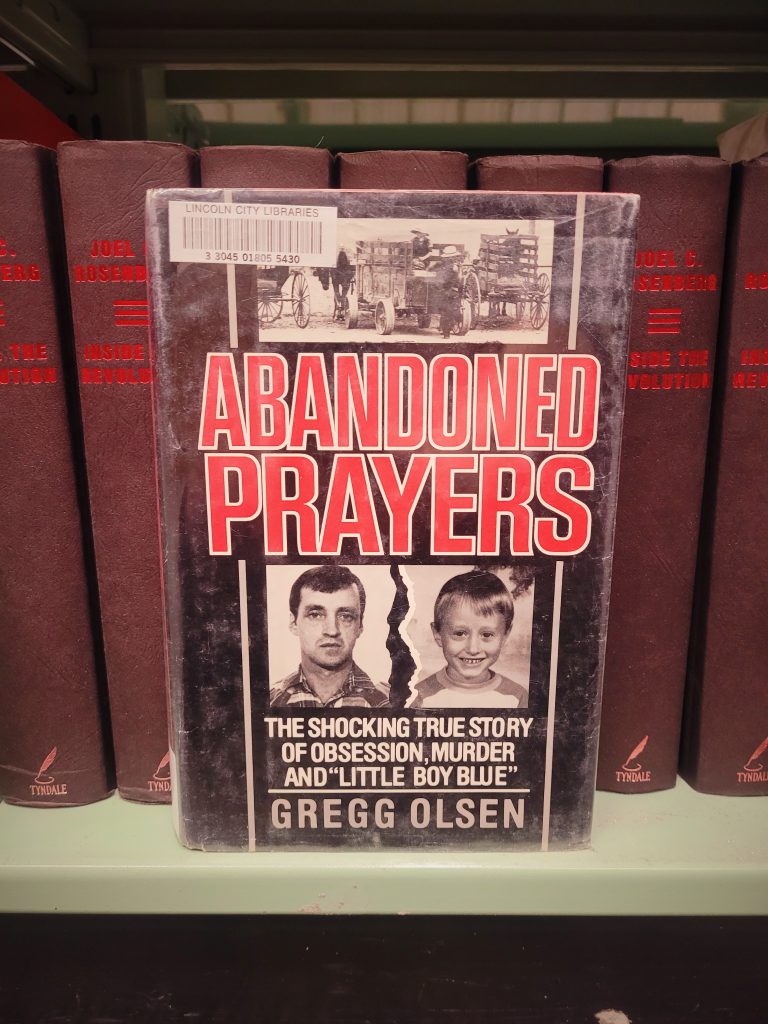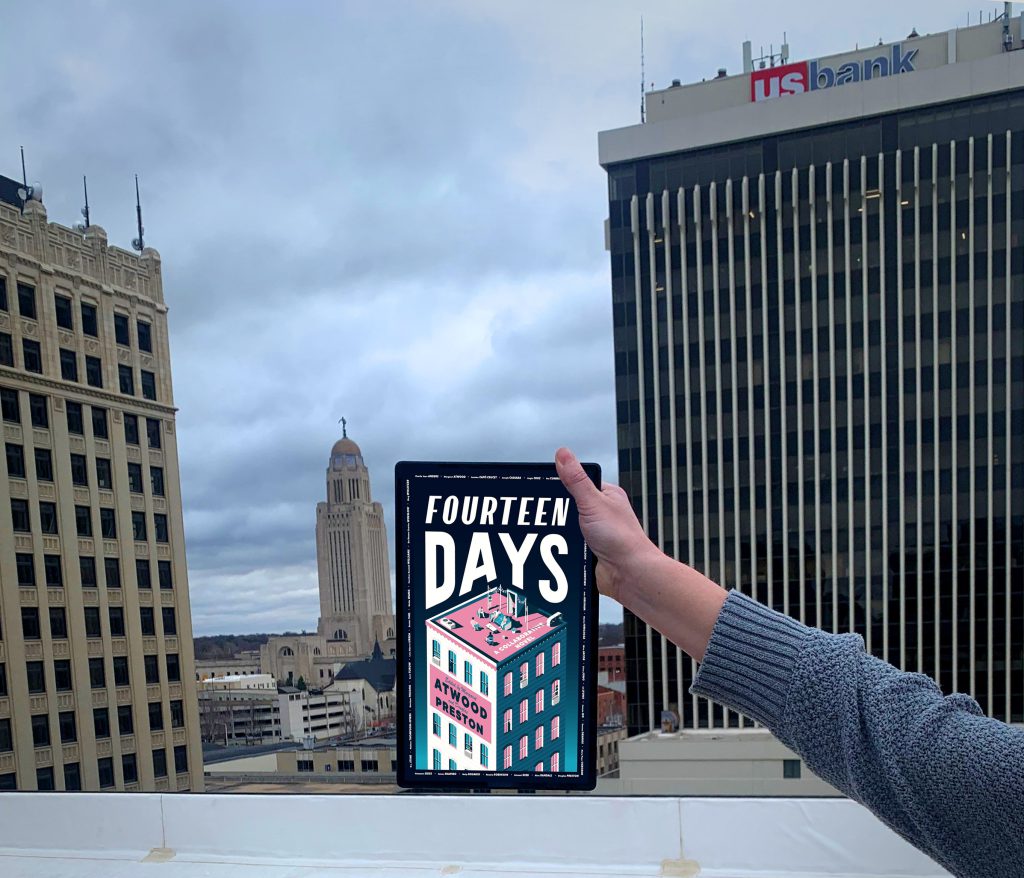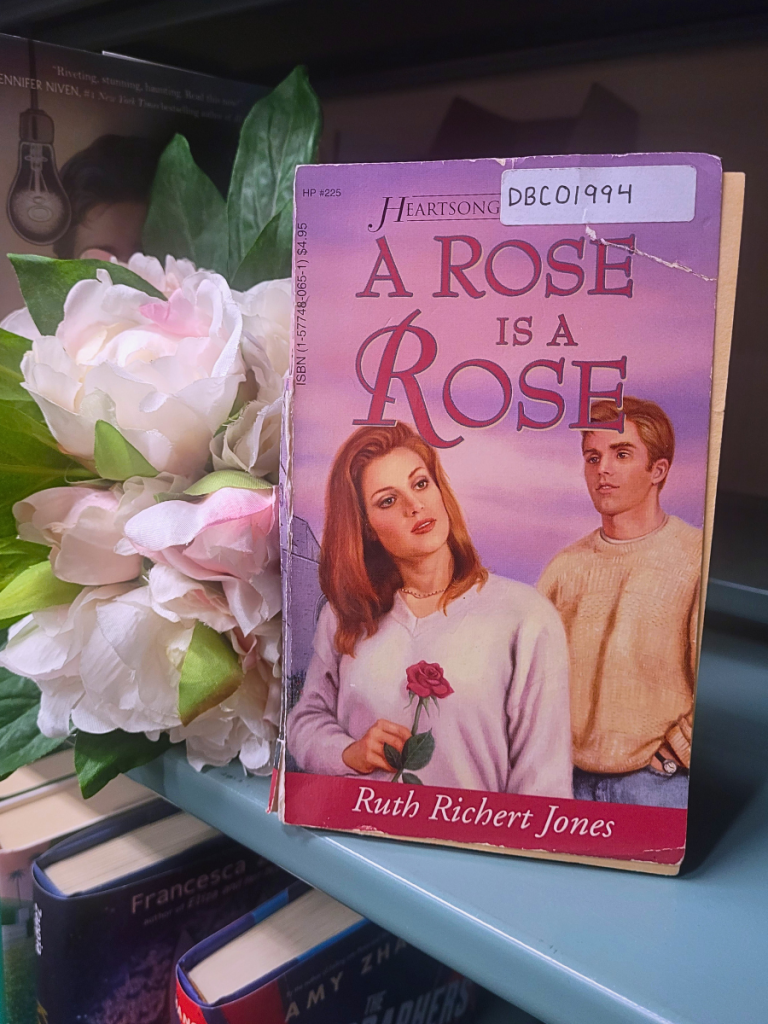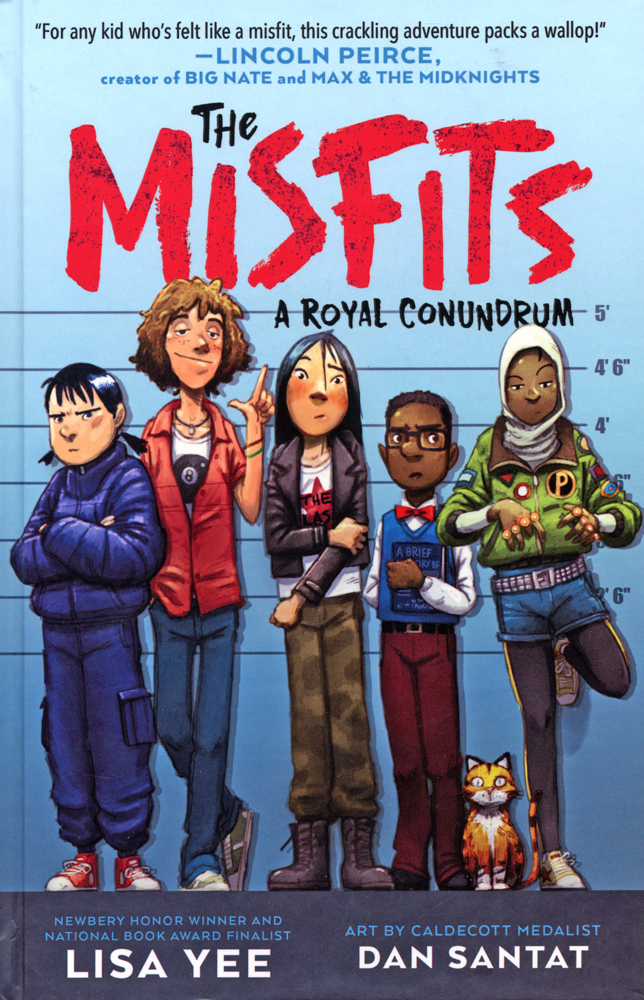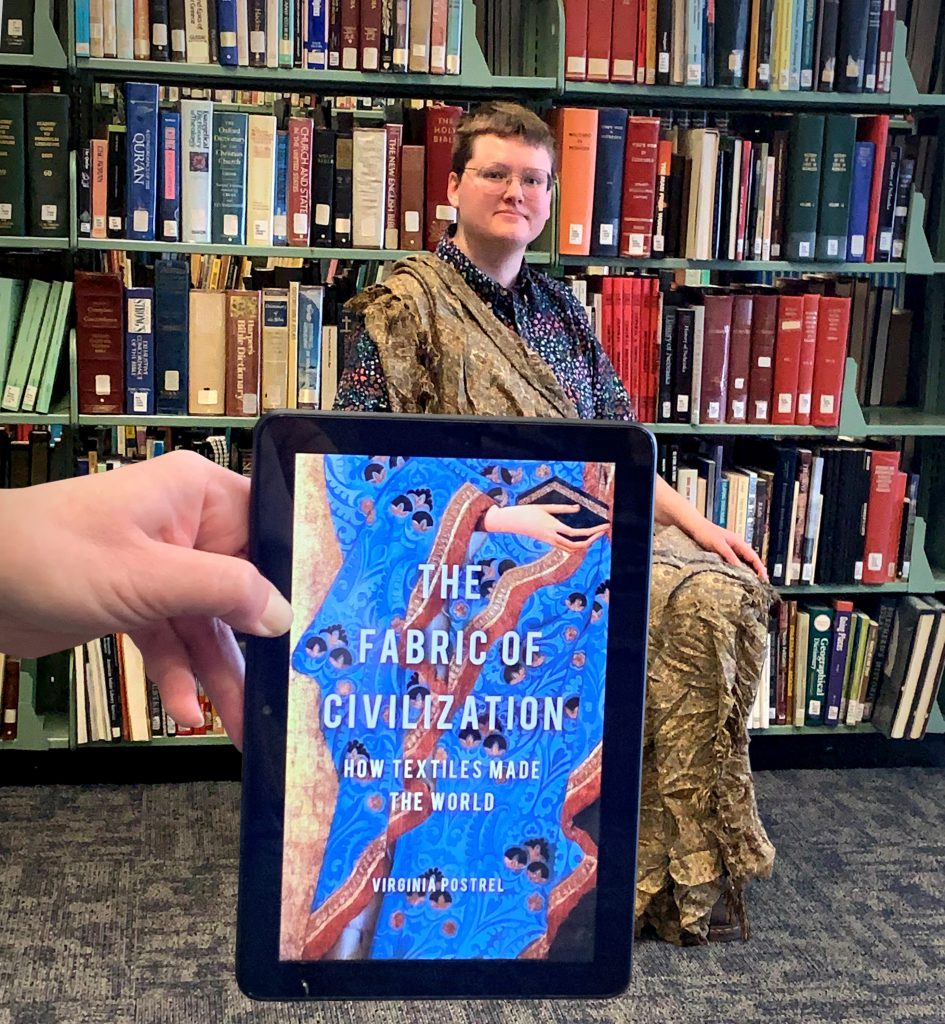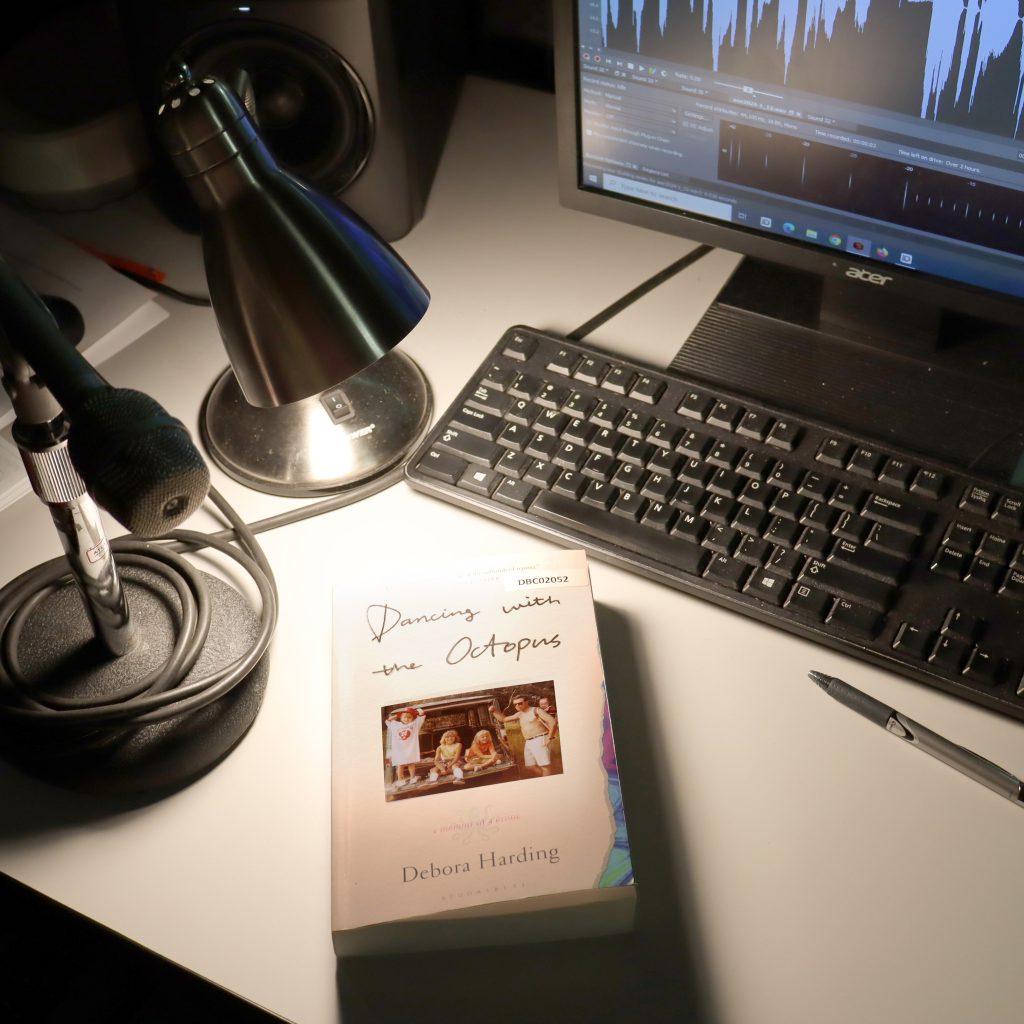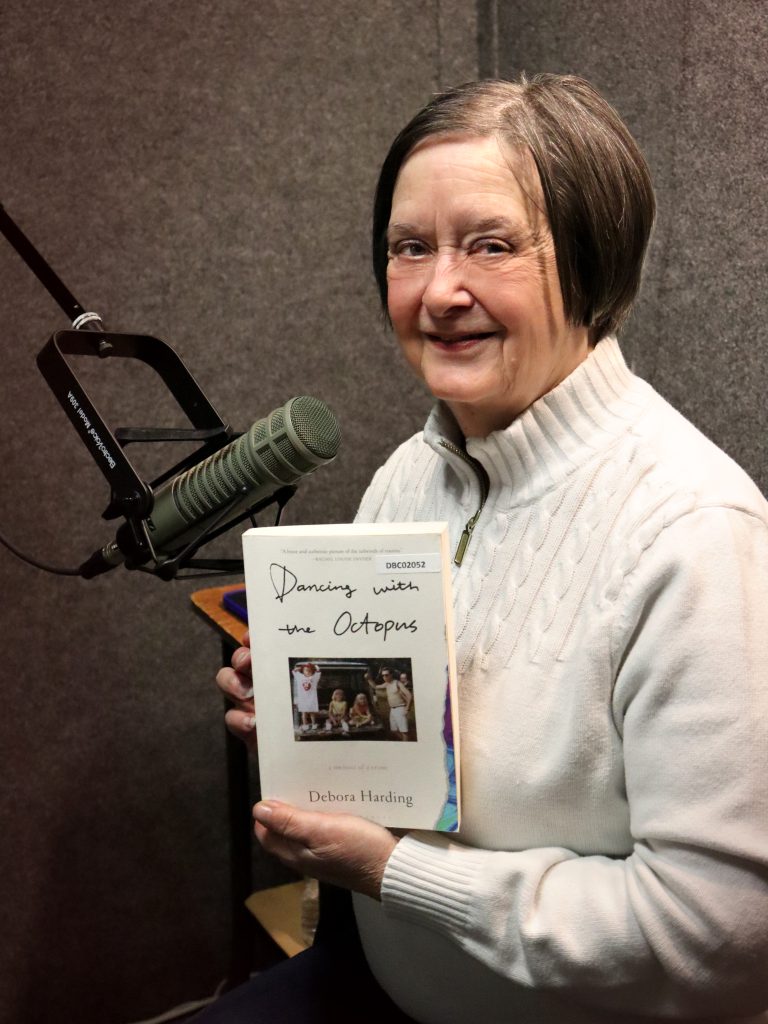Search the Blog
Categories
- Books & Reading
- Broadband Buzz
- Census
- Education & Training
- Friday Reads
- General
- Grants
- Information Resources
- Library Management
- Nebraska Center for the Book
- Nebraska Libraries on the Web
- Nebraska Memories
- Now hiring @ your library
- Preservation
- Pretty Sweet Tech
- Programming
- Public Library Boards of Trustees
- Public Relations
- Talking Book & Braille Service (TBBS)
- Technology
- Uncategorized
- What's Up Doc / Govdocs
- Youth Services
Archives
Subscribe
Category Archives: Books & Reading
Friday Reads: 2020: One City, Seven People, and the Year Everything Changed by Eric Klinenberg
If there were a year that many would like to forget, it would likely be 2020. The worldwide pandemic that brought the spread of a novel virus, originating in rural China, sparked global disruption and changes that will continue into the future. In his new book, 2020, sociologist Eric Klinenberg chronicles the experiences, stories, and research associated with the pandemic, public health measures, economic peril, political distress, and societal changes.
The COVID pandemic, George Floyd’s death and the social justice movement, and the presidential election were prominent in this historic year. Klinenberg observes, “This story is not over. We are living through the long 2020.” 2020 includes an extensive presentation of data and is global in scope. However, as broad and sweeping as it is with comparisons and contrasts, a unique feature is the personal stories that reflect on individuals and their experiences living through this extraordinary time. Experiences depend on individual circumstances. Location, lifestyle, and access to resources all played a significant role. A takeaway is how these disruptive events affected each individual in their own personal way.
Disturbing was the growing divide over policies and actions to address the pandemic. Policies and actions varied from neighborhood, community, state, national, and global. The United States lacked consistency in providing direction. States differed in the extent of public health safety policies – some highly restrictive and others much less so. Communities varied based on local leadership and circumstances. Overall, the pandemic strained public trust in both government and science, leading to deep divisions over measures like mask mandates, social distancing, lockdowns, and vaccinations.
Klinenberg profiles seven New Yorkers including a new bar owner, an elementary school principal living in a multigenerational home, a transit worker, a local political aide, a retired district attorney turned neighborhood organizer, and others. Notable is the Staten Island bar owner who declared his bar an autonomous zone and refused to follow New York City’s health safety requirements. Questionable as his actions were, we can sympathize with his dilemma – opening a new business and having it shut down soon after. Others interviewed spoke of depression, food insecurity, and employment uncertainty. For others – the vulnerable – those living in high-density neighborhoods, nursing homes, those lacking homes with the resources school age children needed to participate in online education.
Despite the negative, there are remarkable examples of compassion and courage, as well as the day-to-day efforts of many to provide care for family, friends, neighbors – donations, pantries, deliveries, childcare, and more. To be appreciated are the health care workers, teachers, and all in “essential” occupations with close exposure to illness.
Klinenberg’s book is difficult to read because it is a reminder of the tragedy of pervasive illness, death, disruption, and economic uncertainty. Consequences have lingered and polarization continues. A troubling question remains whether we are now better prepared and less vulnerable for the next pandemic.
Eric Klinenberg is Professor in the Social Sciences and Director of the Institute for Public Knowledge at New York University. Among his other books is Palaces for the People, published in 2018. In regard to Palaces for the People, Carla Hayden, Librarian of Congress, commented that “Klinenberg is echoing what librarians and library patrons have been saying for years: that libraries are equalizers and absolutely universal.”
Klinenberg, Eric. 2020: One City, Seven People, and the Year Everything Changed. Knopf. 2024.
#BookFaceFriday “It’s a Question of Space” by Clayton C. Anderson
Ground Control to Major #BookFace!
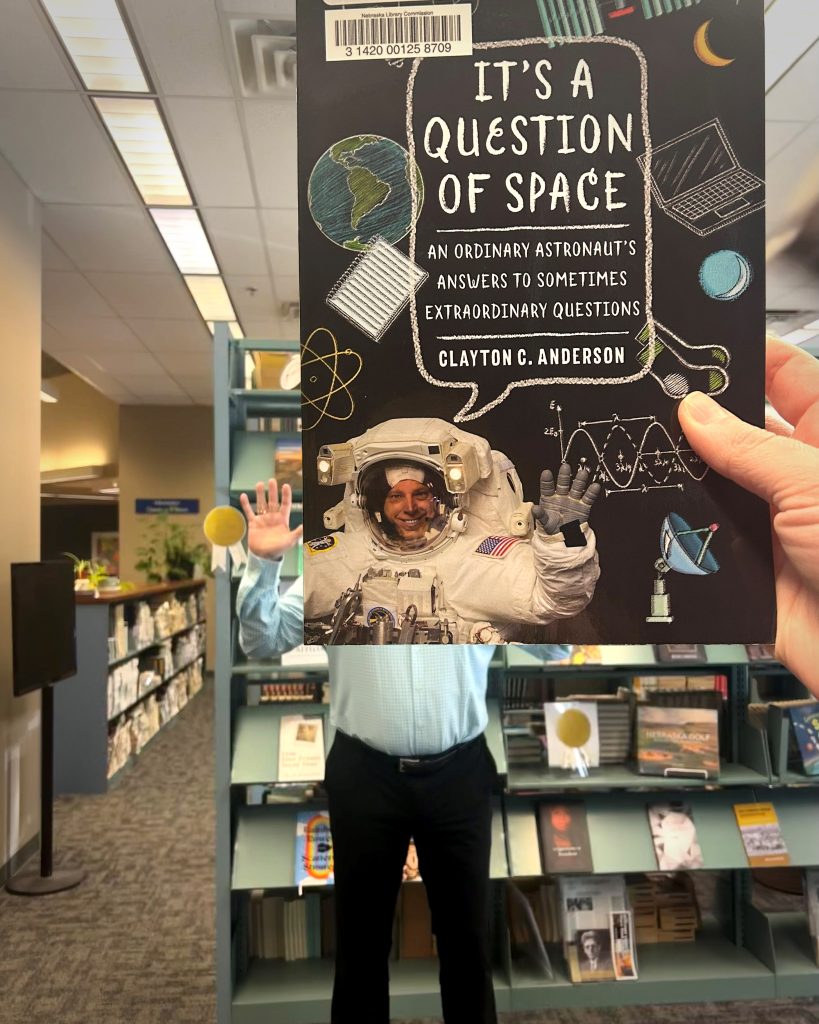
This #BookFace Friday is out of this world! We love featuring Nebraska authors and this week it’s a real life astronaut to boot. Astronaut Clayton Anderson is the author of five books including “It’s a Question of Space: An Ordinary Astronaut’s Answers to Sometimes Extraordinary Questions” (University of Nebraska Press, 2018.) This title as well as his memoir “The Ordinary Spaceman” are available as eBooks in Nebraska OverDrive Libraries. This week’s model is Clayton Anderson himself! He was in the office this week dropping off posters for Nebraska Libraries! We’ll be getting these posters to your Nebraska Regional Library System Directors at the spring Systems Meeting so librarians can let their local Systems know if they are interested in a free poster.
“Clay Anderson dispels myths and simplifies complex subjects for the reader and with examples from his personal experiences provides insight into the daily life of an astronaut. As a teacher trying to fuel the curiosity of and relate relevant topics to students, I would keep a copy of this book on my desk.”
—Dottie Metcalf-Lindenburger, earth scientist, educator, and retired astronaut
Find this title and many more through Nebraska OverDrive! Libraries participating in the Nebraska OverDrive Libraries Group currently have access to a shared and growing collection of digital downloadable audiobooks and eBooks. 194 libraries across the state share the Nebraska OverDrive collection of 26,174 audiobooks, 36,611 ebooks, and 5,210 magazines. As an added bonus it includes 130 podcasts that are always available with simultaneous use (SU), as well as SU ebooks and audiobook titles that publishers have made available for a limited time. If you’re a part of it, let your users know about this great title, and if you’re not a member yet, find more information about participating in Nebraska Overdrive Libraries!
Love this #BookFace & reading? Check out our past #BookFaceFriday photos on the Nebraska Library Commission’s Facebook page!
Friday Reads: Dark, Salt, Clear by Lamorna Ash
My favorite book discoveries are often found nestled amongst travel guides. While guidebooks often shrink small towns into succinct paragraphs, and weigh their significance based on subjective criteria suited for outsiders, I love a book that digs deeper into a place. Dark, Salt, Clear: The Life of a Fishing Town is one of these finds.
Lamorna Ash is a twenty-something Londoner, who ventures to the Cornish coastline to learn about fishing. Although she is an outsider, she has roots in Cornwall. Her mother was raised there and named her daughter for a Cornish village. Lamorna settles in Newlyn, a town centered on the fishing industry, steeped in tradition, but also rapidly changing. The locals quickly welcome her into their lives and workplaces, allowing her access to the various enterprises, including participating in the catch, processing fish, and observing the wholesale auction in an ever changing global market.
Dark, Salt, Clear is not just a story about fishing. It’s about the people, the place, and the complex beauty of it all. Ash peppers her story with poetry and prose from others who experienced the sea and its coastlines. The book’s title comes from the poem “At the Fishhouses” (1947) by Elizabeth Bishop:
“It is like what we imagine knowledge to be:
dark, salt, clear, moving, utterly free,
drawn from the cold hard mouth
of the world, derived from the rocky breasts
forever, flowing and drawn, and since
our knowledge is historical, flowing, and flown.”
Ash is also adept at interweaving her own poetic observations about life and the natural world, and often reflects on the things she learns from the people she meets including captains, deckhands, birdwatchers, fishmongers, processors, barkeeps, and geologists.
“A geologist’s task is to see beyond the ways in which time tries to smooth out difference, examining layers in order to isolate each sift to our world, to feel every fault line. We discuss how hard this is to do this with people, to imagine our lives not as one continuous line, but comprised of hundreds of versions, stacked up behind us, and hundreds more ahead of us too, like those pairs of facing mirrors that make your reflection curl up infinitely on either side of you.”
The book not only explores what it means to work in the fishing industry, but also what it means to live in a place that is so connected to the sea. As a person who grew up in a small coastal town in the Pacific Northwest, I was intrigued to learn about another coastal town across the globe. Books, like travel, can broaden our horizons, but also connect us. People in Cornwall look for the illusive “Green Flash” just like the residents of my hometown. The fishing industry everywhere is effected by globalization and climate change. Small seaside towns struggle with similar issues like tensions between tourism and industry. Fishing families across the globe are impacted by metal health issues, tragedy, and grief.
If you are curious about the natural world and the human experience in a small town across the Atlantic, check out Dark, Salt, Clear. While I picked up a physical copy of this book from my local library, you can also read it as an ebook through the Nebraska OverDrive Libraries.
Ash, Lamorna. Dark, Salt, Clear: the Life of a Fishing Town. Bloomsbury, 2020.
Book Club Spotlight – The Daughter of Time
With the British Royal Family gossip mill recently abuzz, and as the sun sets on Women’s History Month, now is the perfect opportunity to visit Josephine Tey’s 1951 novel The Daughter of Time, and take a step back to the 15th century to investigate the murderous reputation of Richard III. Holding the top spot in the British Crime Writers’ Association’s list of Top 100 Crime Novels of All Time, The Daughter of Time is quite the influential novel, leading in part to the discovery of Richard III’s burial site in 2012. Like Nebraska’s own Mignon G. Eberhart, Tey wrote during what is called the “Golden Age of Crime Fiction”, and her novels continue to surprise and delight readers.
Hospitalized from his latest case, Inspector Alan Grant is at a loss for entertainment. Having counted the ceiling tiles and studied the comings and goings of his nurses, he is growing restless. It’s not until a friend suggests he attempt to solve a cold case from his hospital bed does inspiration strike. Examining a portrait of the late King Richard III, Grant (a fan of physiognomy) doesn’t see the ruthless uncle who would kill his two young nephews. He sees a gentle man, lost to time. With the help of a young American researcher, Grant races across histories written by second hands with ulterior motives. And as the pair work to challenge myths and legends to clear Richard’s name, they can’t help but wonder, what could be gained by besmirching an usurped King?
“The truth of anything at all doesn’t lie in someone’s account of it. It lies in all the small facts of the time. An advertisement in a paper, the sale of a house, the price of a ring.”
Josephine Tey
Chock full of wit and political intrigue, The Daughter of Time is a history lesson like no other. Our copies at the Commission include a 2013 introduction by the late author Robert Barnard whose overview of Josephine Tey (real name Elizabeth Mackintosh) includes her writing style, spot in history, and acknowledgments of prejudices characteristic of her time which are unfortunately present in the text. Book Club groups will enjoy exploring the very real mystery of Richard III and the unknown fate of the two Princes in the Tower against the safe and removed backdrop of Grant’s hospital bed. And the delightful repartee between characters cannot be understated, from puns to inquiring over the ownership of who gets to die in the Thames- Tey is truly a master of the genre.
If you’re interested in requesting The Daughter of Time for your book club, you can find the Request Form here. There are 7 copies available. (A librarian must request items)
Tey, Josephine. The Daughter of Time. Simon and Schuster. 1951
Posted in Books & Reading
Tagged book club spotlight, books, Reading, Women's History Month
Leave a comment
#BookFaceFriday – “Reader’s Digest: Special Pets Issue”
This #Bookface is ready to sit and stay.

It’s hard to teach an old dog new tricks, and it’s easy to forget you have access to magazines on Nebraska OverDrive Libraries! Take a look at “Reader’s Digest” just one of 3,596 English titles now available as an eBook from Nebraska OverDrive Libraries! Three years of issues are available of many titles, as well as some single titles (generally special edition issues of certain magazines or items like adult coloring books). Magazines do not count against a reader’s checkout limit of 6, and magazine issues may be checked out for 7, 14, or 21 days, depending on your library’s policy. Along with all the English-language titles, you have access to Spanish-language titles, and many other languages including French, German, Chinese, Japanese, Russian, Afrikaans, and Italian.
“In this era of information overload, Reader’s Digest offers something unique: the very best advice, information and inspiration from multiple sources, condensed into an easy-to-read digest. In each issue you’ll get trusted, time-saving insights about Health, Personal Finance, Work, Family, and National issues, PLUS exclusive book excerpts, news-making interviews, and humor.”
Reader’s Digest Blurb
Libraries participating in the Nebraska OverDrive Libraries Group currently have access to a shared and growing collection of digital downloadable audiobooks and eBooks. 194 libraries across the state share the Nebraska OverDrive collection of 26,174 audiobooks, 36,611 ebooks, and 5,210 magazines. As an added bonus it includes 130 podcasts that are always available with simultaneous use (SU), as well as SU ebooks and audiobook titles that publishers have made available for a limited time. If you’re a part of it, let your users know about this great title, and if you’re not a member yet, find more information about participating in Nebraska Overdrive Libraries!
Love this #BookFace & reading? We suggest checking out all the titles available in our Book Club collection, permanent collection, and Nebraska OverDrive Libraries. Check out our past #BookFaceFriday photos on the Nebraska Library Commission’s Facebook page!
Posted in Books & Reading, General
Tagged bookface, bookfacefriday, books, Ebook, Magazine, Nebraska OverDrive Libraries, Reader's Digest, Reading
Leave a comment
Friday Reads: Elvis in Vegas: How the King Reinvented the Las Vegas Show
I miss the Las Vegas of old. The endless submersion in Kitch (perhaps only bested by the highly recommended House on the Rock), cheap eats and drinks, low stakes table games, cigarillo smoke, and copious amounts of prime opportunities for people watching. Much of this existed historically, or at least to a greater extent by comparison, Downtown. I remember the draw to Downtown, before the gaudy “Fremont Street Experience” was installed in 1995. Less walking for sure, not to mention a much better value. A place where you could traverse across 4 or 5 casinos in a matter of just a few minutes. Where you could play 25 cent craps at the Golden Gate or $1 tables at the Four Queens, California, Las Vegas Club, Union Plaza, or the Horseshoe. If you were highbrow, you went to the $5 tables at the Golden Nugget. The dice go cold? Pick up your cocktail and head next door. You had options. For hungry gamblers, a trip over to the El Cortez or Lady Luck always offered excellent value, just off the main drag, but it was always advisable on the walk back (especially at night), to never, under no circumstances ever, stop. Always keep moving. These days, unfortunately, on the main drag downtown, you have hustlers in outlandish costumes (or virtually no costume at all) hassling you every ten seconds under that Fremont Street canopy that reeks of Commercialism.
Out on the strip, you used to have classics such as the Aladdin, Dunes, Riviera, Sands, Sahara, and while the Tropicana is still there (technically), the Moai are unfortunately long gone. The Moai most likely were too large to move at 35 feet tall, made outta solid concrete, and weighing 300,000 pounds each (they should’ve just left them there). While the Aku Aku restaurant in Las Vegas closed before my time, I did visit the Stardust on numerous occasions before it was imploded in 2007. Nothing would beat a cocktail stop at Slots-A-Fun when strolling the strip on hot summer days. Always ice cold and always just 75 cents, purchased from the guy standing across from the open door, insulated by the blaring casino air conditioning. Now we have the godawful Margarita by the Yard, at the low low price of (roughly) $35. The quantity may be there, but the value and quality sure ain’t. The authorities did keep one Aku Aku Moai, from the restaurant at the Stardust, (smaller than the ones at the Tropicana) moving it to Sunset Park, so there is that I suppose. Some of the local old timers may remember the Aku Aku lounge in Lincoln, inside the Villager Motel on O Street. Swank at a level only matched by its obvious equal, The Brothers Johnson. Unfortunately, like almost every other good thing around, the establishment tore down the Villager. The Tropicana will soon be demolished to make way for a baseball stadium, as many other icons have likewise succumbed to destruction. Anti-depressants were undoubtedly popped by any rational person after the announcement that the Mirage was sold and its iconic volcano will (eventually) be torn out to make way for a guitar shaped hotel (the property is now operated by Hard Rock International). What is the matter with these people? We should be discussing restoration of these gems to what they once were, instead of demolishing them in favor of something “new” that lacks any ounce of character. While I’m on the subject, I’d add that in almost all cases, demo and rebuild is more expensive than renovate and restore. However, the architects, designers, and consultants (and the politicians being greased by them) don’t make as much money taking that train, which is why the conductors ain’t selling it.
This book is more than merely the story of the revival of Elvis Presley’s career by virtue of his 636 sold-out shows at the International Hotel in Las Vegas. It tells a much broader story of the other performers and the history of those performances in the city. The set-up leading to the resurgence of Elvis is a worthwhile read. Yes, there is much focus on the Rat Pack and other Vegas essentials such as Tom Jones, Wayne Newton, Liberace, and Don Rickles (just to name a few), as well as the numerous all night long lounge acts. Takeaways: Most were great performers, but Frank Sinatra was a tyrant of legendary magnitude, directing his outbursts to almost all, but especially Sammy. The writing in this book is filled with all sorts of nuggets. As evidence, describing the comeback of Elvis, and the success of his first show, Zoglin summarizes:
“The show lasted an hour and fifteen minutes, and Elvis worked himself to a frazzle: pacing the stage like a panther, crouching, lunging, leaping, doing karate kicks and punches. He was audibly huffing and puffing after just a few minutes. He gulped water and Gatorade and mopped his sweat with towels handed to him by Charlie Hodge, or handkerchiefs and napkins tossed onstage by women in the audience.”
And, the downfall:
“His performances first began to be affected, by most accounts, during his August 1971 engagement. Elvis looked puffy and seemed listless onstage. His sets were rarely longer than forty-five minutes, and filled with so many fits and starts and distracting karate displays that some audience members actually walked out.”
Overall, Zoglin’s book is a formidable history of entertainment in the city of Las Vegas. Don’t be fooled by the title, it only partially describes the comeback (and downfall) of Elvis. In reality, it’s a much broader history of showbiz in Las Vegas, and the longing for those good ol’ days.
Zoglin, Richard. Elvis in Vegas. Simon & Shuster, 2019.
Book Club Spotlight – A Beautiful Poison
Happy Women’s History Month! This month we’ll be featuring incredible women authors, and today’s Book Club Spotlight is written by none other than the brilliant Lydia Kang, MD. Author of numerous Adult, Young Adult, Non-Fiction, and Star Wars novels, Kang, an internal medicine physician in Omaha, combines her passion for medicine and literature in her award-winning historical/medical mysteries. Her debut novel, A Beautiful Poison, takes place in New York City, where she studied medicine at Columbia University and the New York University School of Medicine.
In the upper echelon of 1918 New York City, everyone has secrets. In a society stuck between the Gilded Age and the Jazz Age, Americans are gripped by war, and the looming influenza outbreak, while Allene is chasing after her past. A past where she, Jasper, and Birdie were together. And finally, when they are all together again, Florence Waxworth gets herself poisoned in the middle of Allene’s engagement party! As the murdered bodies continue to fall around them, their hot-headed group is the only one who can solve the mystery. Torn apart by their whims and desires, the trio must face the influenza, a killer, and each other, in order to make it out alive.
“It was a fresh new day, served with a glorious sunrise and of course Florence’s untimely death to solve.”
Lydia Kang
For mature teens or adult book club groups looking for fast-paced mysteries to keep you on your toes, and mixed with the incredible setting, A Beautiful Poison is a joy to experience and try to solve alongside the characters. As a former resident and student, Kang’s heart shows when describing New York City and specifically Bellevue Hospital, which features heavily in the novel and includes the real pioneers of forensic medicine as integral figures in solving the medical mystery. The characters of Allene, Jasper, and Birdie are complicated and compelling, as they try to mend a friendship and deep love that may be too far gone.
Related Readings:
The Poisoner’s Handbook by Deborah Blum
- The Poisoner’s Handbook PBS Documentary (Hoopla Digital)
If you’re interested in requesting A Beautiful Poison for your book club, you can find the Request Form here. There are 3 copies available. (A librarian must request items)
Kang, Lydia. A Beautiful Poison. Lake Union Publishing. 2017
Posted in Books & Reading
Tagged AAPI, book club spotlight, books, Nebraska Author, Reading
Leave a comment
Friday Reads: Tasting History by Max Miller
In February 2020, Max Miller posted his first Tasting History video to YouTube. A week later COVID-19 hit, and he was furloughed from his job. As the world entered the beginning of the pandemic lockdown, people went online, looking for entertainment, distraction, and connections. Tasting History was there. And the rest is, well, history.
Now, his viral video series has become a cookbook, Tasting History, Explore the Past through 4,000 Years of Recipes. Full disclosure: I haven’t cooked anything from this cookbook yet, I’ve just been enjoying reading through it so far.
We have been watching the Tasting History videos almost from the beginning, so when Max announced there would be a cookbook coming out, I knew we had to have it. And I was not disappointed.
The videos are a combination of recipe demo and history lesson, and that format has been carried over into the cookbook.
The book is arranged by geographic area: The Ancient World, The British Isles, Continental Europe, The Near & Far East, and The New World. Within each section the recipes are from oldest to newest. The oldest being Stew of Lamb, from Babylon, c. 1740 BC. The most recent recipes are both from 1914: Simnel Cake from England and Pecan Pie from Texas. Each recipe includes a few paragraphs about the history of the dish and the area of the world it originates from.
Since many old recipes do not provide precise measurements, or ingredients that we may recognize or have access to today, Max has re-created them as best as he can, based on his own cooking and historical knowledge. If you watch his videos, he does taste each dish, and he doesn’t always like them. But, that’s part of the fun and experimentation.
I think Tasting History, both the cookbook and the video series, is perfect for foodies, history buffs, or foodie history buffs. Max is still making videos, and I look forward to watching the new ones every week. A fun tip: he is a big Pokemon fan, and there is always a figure or plush in the background of each video that relates to the dish he is making. See if you can find them all!
#BookFaceFriday “No Summit Out of Sight” by Jordan Romero
Off we go, into the wild blue #BookFaceFriday!
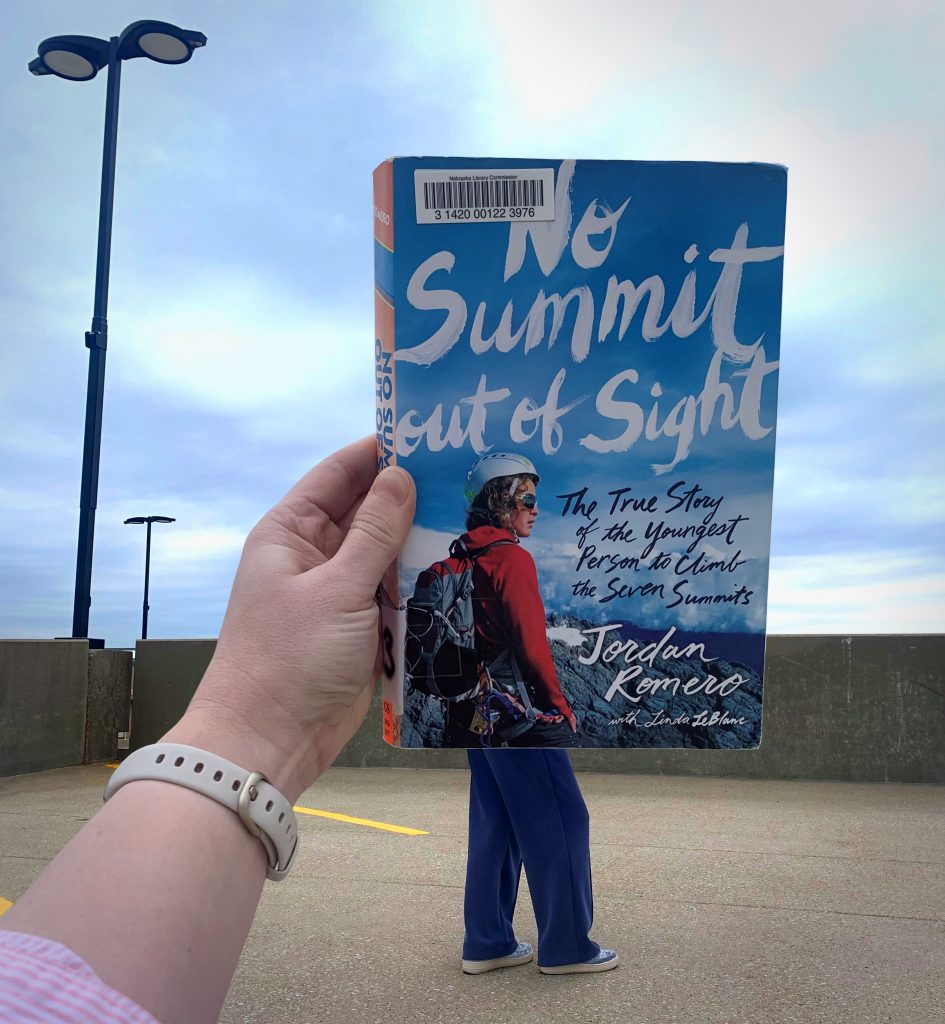
Get ready to climb every mountain with this week’s #BookfaceFriday,”No Summit Out of Sight: the True Story of the Youngest Person to Climb the Seven Summits” by Jordan Romero (Simon & Schuster Books for Young Readers, 2014)!
This title is available as a book club kit, and fits right into the theme of the the 2024 Collaborative Summer Library Program (CSLP): “Adventure Begins at Your Library.” You can find even more tales of adventure and survival by choosing that genre in the drop-down menu on our Book Club Kit page – just right for those young readers looking for a vicarious thrill!Our Youth Services Librarian, Sally Snyder, has been traveling all across Nebraska in recent weeks presenting Summer Reading Program (SRP) workshops for librarians. Didn’t make it to a workshop? Check out Sally’s NCompass Live: Summer Reading Program 2024: Adventure Begins at Your Library and learn about nature- and adventure-themed books perfect for your library’s SRP.
“The emotional pitch of the story remains high as Romero contends with extreme weather, frustration, exhaustion, and homesickness to reach, with almost palpable exhilaration, each peak.”
—Publishers Weekly
Book Club Kits Rules for Use
- These kits can be checked out by the librarians of Nebraska libraries and media centers.
- Circulation times are flexible and will be based upon availability. There is no standard check-out time for book club kits.
- Please search the collection to select items you wish to borrow and use the REQUEST THIS KIT icon to borrow items.
- Contact the Information Desk at the Library Commission if you have any questions: by phone: 800/307-2665, or by email: Information Services Team
Find this title and many more through Nebraska OverDrive! Libraries participating in the Nebraska OverDrive Libraries Group currently have access to a shared and growing collection of digital downloadable audiobooks and eBooks. 194 libraries across the state share the Nebraska OverDrive collection of 26,174 audiobooks, 36,611 ebooks, and 5,210 magazines. As an added bonus it includes 130 podcasts that are always available with simultaneous use (SU), as well as SU ebooks and audiobook titles that publishers have made available for a limited time. If you’re a part of it, let your users know about this great title, and if you’re not a member yet, find more information about participating in Nebraska Overdrive Libraries!
Love this #BookFace & reading? Check out our past #BookFaceFriday photos on the Nebraska Library Commission’s Facebook page!
#BookFaceFriday “Among the Bros” by Max Marshall
Dude, it’s #BookFaceFriday!
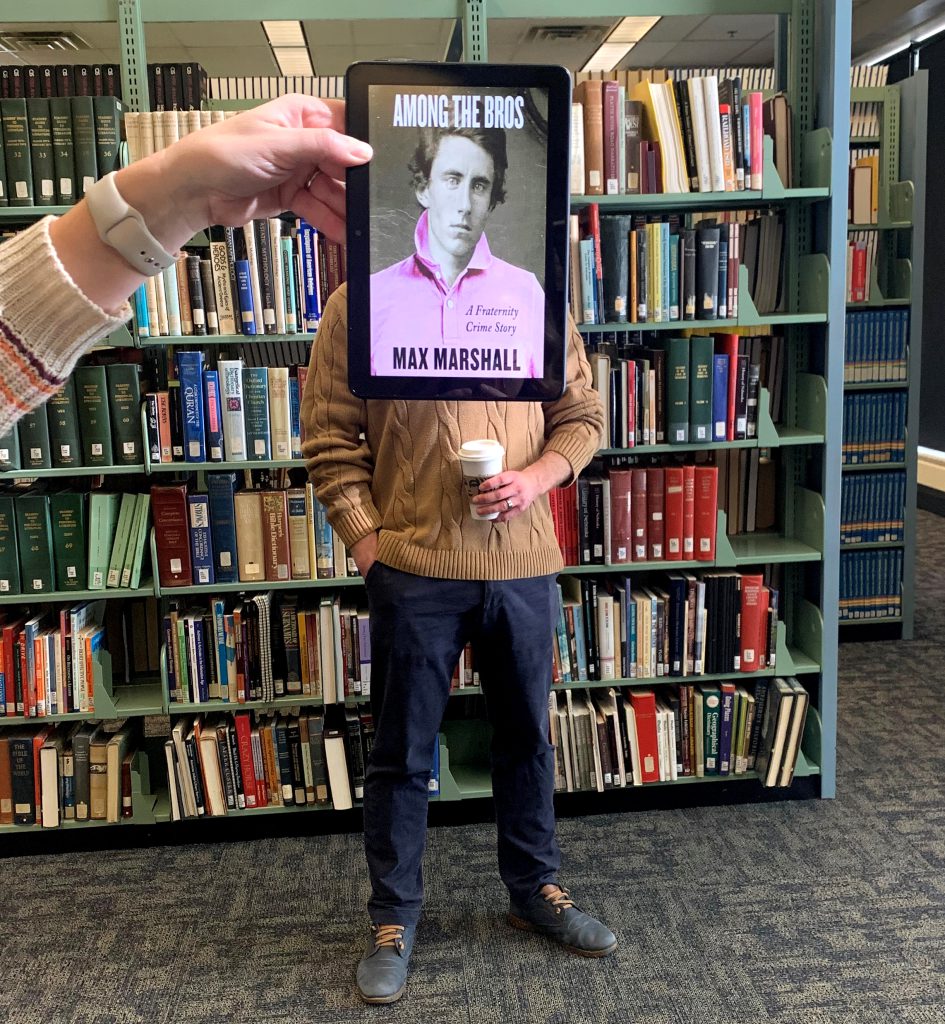
No cap, bro – this really happened! Fans of true crime and nonfiction storytelling are in for a wild ride
in this week’s #BookFace “Among the Bros: A Fraternity Crime Story” by Max Marshall (HarperAudio, 2023.) This title is available as an audiobook in Nebraska OverDrive Libraries! This week’s title fits into several different subject genres in Nebraska OverDrive Libraries including True Crime, Sociology, Autobiography & Biography, and Nonfiction. Depending on what you have a penchant for, you can search the entire digital collection by subject, whether it’s as broad as Nonfiction, or as niche as True Crime.“Through chilling, candid conversations with his sources, Marshall convincingly illustrates how these young men allowed greed to wreck their lives. The result is a fast-paced and frightening campus crime saga.”
—Publishers Weekly
Find this title and many more through Nebraska OverDrive! Libraries participating in the Nebraska OverDrive Libraries Group currently have access to a shared and growing collection of digital downloadable audiobooks and eBooks. 194 libraries across the state share the Nebraska OverDrive collection of 26,174 audiobooks, 36,611 ebooks, and 5,210 magazines. As an added bonus it includes 130 podcasts that are always available with simultaneous use (SU), as well as SU ebooks and audiobook titles that publishers have made available for a limited time. If you’re a part of it, let your users know about this great title, and if you’re not a member yet, find more information about participating in Nebraska Overdrive Libraries!
Love this #BookFace & reading? Check out our past #BookFaceFriday photos on the Nebraska Library Commission’s Facebook page!
Posted in Books & Reading, General
Tagged Among the Bros, Audiobook, bookfacefriday, Max Marshall, Nebraska OverDrive Libraries, OverDrive, Reading, True Crime
Leave a comment
Friday Reads: The Misfits: A Royal Conundrum by Lisa Yee
Olive Zang (almost 12) doesn’t really fit in – at school, with friends (what friends?) or even with her mom and dad. They are always gone on a trip for work, and seem to not really notice her. This time, before they leave again, they put her in a boarding school located on an island in San Francisco Bay.
Once she arrives at RASCH (Reforming Arts School) she undergoes an unusual set of tasks as an aptitude test for placement in the school. Once placed with Pod 101 she is surprised at how quickly the group of five bonds. They are hastily put into training to prepare them to be a contributing group for a secret crime fighting organization. Soon the very existence of the school (the first one where Olive feels connected and appreciated) is on the line, can The Misfits (her group) help capture a jewel thief? Will they help or hinder the effort?
As Kirkus says, “A fantastical blend of quirky characters and goofy adventures.” (11/1/23) Includes occasional black and white drawings by Dan Santat. This is the first book of a new series aimed at grades 3-6 or so.
Yee, Lisa. The Misfits: A Royal Conundrum. Random House, 2024.
Book Club Spotlight – Hector’s Bliss
A unique aspect of our Book Club Collection here at the Commission is our focus on Nebraska authors, settings, and stories, housing the hidden gems of Nebraska literature and history! Today’s pick for the Book Club Spotlight, in particular, focuses on a relatively unknown part of Nebraska’s Black History. While we know the story of white pioneers and homesteaders, there was also the incredible journey of formerly enslaved people who became landowners, farmers, and a community in the Sandhills. Hector’s Bliss: Black Homesteaders at Goose Lake, Nebraska, by Dennis Vossberg, is a historical fiction novel based on the incredible history of Black Homesteaders, who, under false pretenses, persevered in the harsh farmland until drought and the Dust Bowl overcame the whole region.
In the late 1800s, at the height of legalized racial segregation, just south of O’Neil, Nebraska, there was the short-lived story of Bliss, and the Black community members who called it home. During the economic downturn caused by the end of the Civil War, the newly freed people were looking for a reliable place to land. As newly married Hector and Julia Dixon were floundering in a small mining town, land promoters arrived, falsely promising flourishing farmland and untapped coal veins awaited them in the far reaches of the Nebraska Sandhills. The Dixons and 13 other families unknowingly move to the desert-like plains to start anew. Besought by harsh conditions, poverty, and rural isolation, their community works hard to create a solid foundation for the future despite the conditions. As one of the more educated residents, Hector Dixon finds himself wearing many hats in Bliss, as a farmer, the integrated school’s teacher, the justice of the peace, and eventually a milk road delivery man, all to support his growing and tenacious family. Striving to find a balance between the life his children dream of and the one he has worked so hard to build.
He took a lingering gaze over the peaceful countryside, thinking of how transient were the human inhabitants of this land, and how triumphantly enduring was the land itself
Dennis Vossberg
Hector’s Bliss is a moving historical fiction crafted with love and respect for the subjects, and Book Club Groups will find value in learning about this little-known Nebraska history. They may even be encouraged to learn more. Covered in the Nebraska Public Media story, “Looking for Bliss,” the story of the Dixons and Bliss is virtually unknown. Hector’s Bliss brings to light Black history that has been erased from cultural memory, revealing a more full and beautiful world. We won’t really ever know how the Black Homesteaders were treated by their white compatriots as those details have been lost to time. So, while prejudice and racism are addressed, Vossberg chooses to focus the limited peril on the indomitable human spirit and the life these people worked to build after slavery.
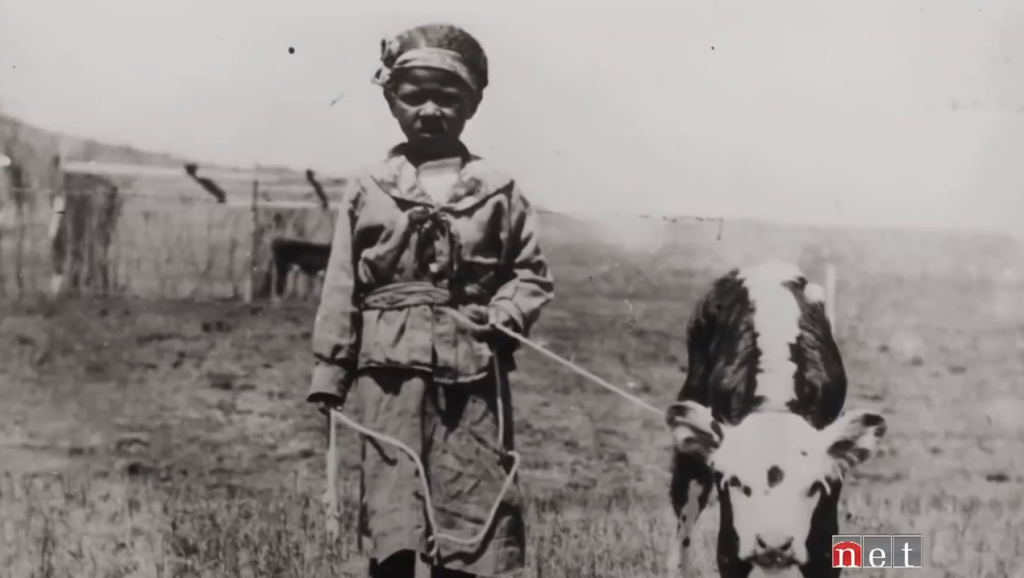
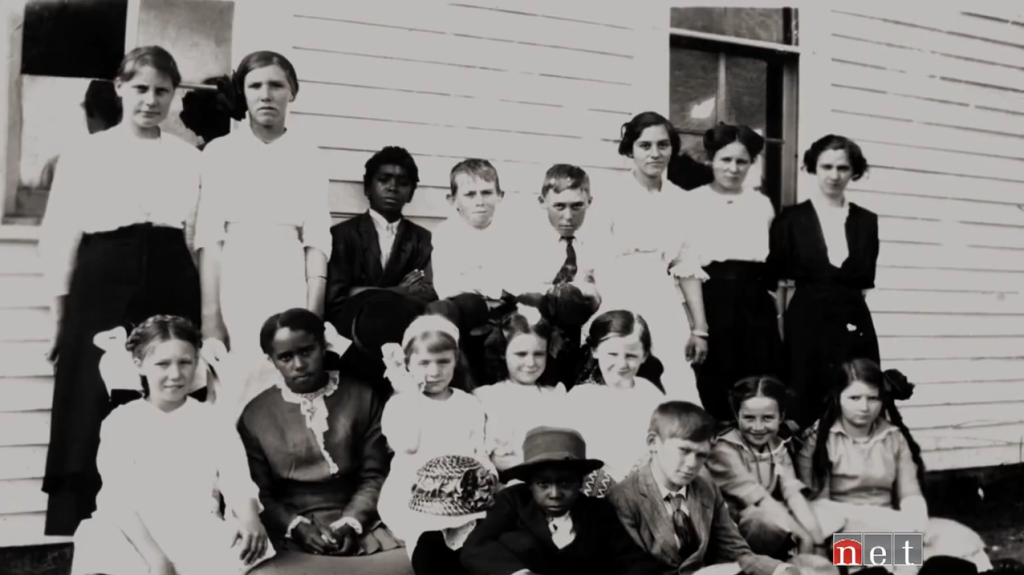
If you’re interested in requesting Hector’s Bliss for your book club, you can find the Request Form here. There are 4 copies available. (A librarian must request items)
Vossberg, Dennis. Hector’s Bliss. Morris Publishing. 2006
Posted in Books & Reading
Tagged Black History Month, book club spotlight, books, Nebraska History, Reading
Leave a comment
Big Talk From Small Libraries 2024 is tomorrow!
Small libraries! Awesome ideas! FREE!
Join us tomorrow for the 2024 Big Talk From Small Libraries online conference. Registration is still open, so head over to the Registration page and sign up!
We have a full agenda for the day, with speakers from academic and public libraries presenting on a wide variety of topics: fundraising, Memory Cafes, summer reading, accessibility audits, afterschool meals programs, DEIB: diversity, equity, inclusion, and belonging, and much more.
This event is a great opportunity to learn about the innovative things your colleagues are doing in their small libraries.
And, Nebraska library staff and board members can earn 1 hour of CE Credit for each hour of the conference you attend! A special Big Talk From Small Libraries CE Report form has been made available for you to submit your C.E. credits.
So, come join us for a day of big ideas from small libraries!
Friday Reads, Mickey 7, by Edward Ashton
Mickey 7 by Edward Ashton is hard science fiction set in the far future. Mickey Barnes was born on a colony world where the hardest part of settling the colony is over. The planet is terraformed, and it’s safe to live there. Life is nearly ideal, except Mickey has no scientific or technical talents; he’s a historian on a world where everything can be looked up online. He does get a subsistence pay, but he’s gotten into deep debt, and needs to get off the planet, and there’s only one way off—the colony ship that’s been put together at great expense to the colony. Everything is weighed to the last milligram, and even the colonists pared down belongings aren’t allowed on, at the last minute. And his only way on is to become an “expendable.” The one member of the new colony that can die and be printed from a vat, with his mind transferred. You see, on the trip, and in the settlement, the robots they have can’t be replaced, but the expendable can. Plus, they have found, that the human body takes longer to shut down in adverse situations, like intense heat or radiation, than the electronic bots.
The story starts in real time stream, starting with Mickey 7, on the new colony world, an ice planet, falling down a crevice, and getting slightly (for him) injured. His air cover won’t come to help him, for fear of the creepers, the local life forms. He’s too deep to be rescued, but is rescued by a huge creeper, and set outside tunnels running under the planet’s surface. This is the source of the latest problem, when the air cover flyer got back to the settlement, he reported Mickey dead, so number 8 was printed. And Mickey 7 returned. The colony can’t support one more person, but neither want to die. There is a taboo about having more than one duplicate existing at a time. The explanation of the taboo, Mikey’s multiple deaths, and research into how other colonies have begun are the rest of the story. The author handles several heavy themes quickly, with humor. Where do you go for privacy, in a colony with just public spaces, with only under 200 people, when you can’t be in your room? Not being seen by the same people in overlapping times is much more difficult than one would suppose, and Mickey 8 is far less concerned about dying, that Mickey 7.
And then there are the creepers. When the planet was surveyed, it was done from their home planet. Since no industry was detected, and it seemed to have enough oxygen, and was just in the “Goldilocks zone” for life, it was thought habitable. When they got there, it was covered in ice, with unbreathable air. The creepers showed up, and seemed to be mere animals. However, Mickey discovers that their tunnels are evenly spaced at one hub. He has had a sneaking feeling for a while that they may be sentient. Which is just another of Mickey 7’s problems—to report, or not report. Especially since he believes, the leader of the expedition will not only end his life, but the indigenous life forms, too. So, of course, it gets much more complicated from there.
An interesting, and surprisingly funny stand alone, with some deep thinking hidden inside.
Mickey 7, by Edward Ashton, hardback, St. Martin’s Press, ISBN 978-1-250-27503-6, 27.99.

